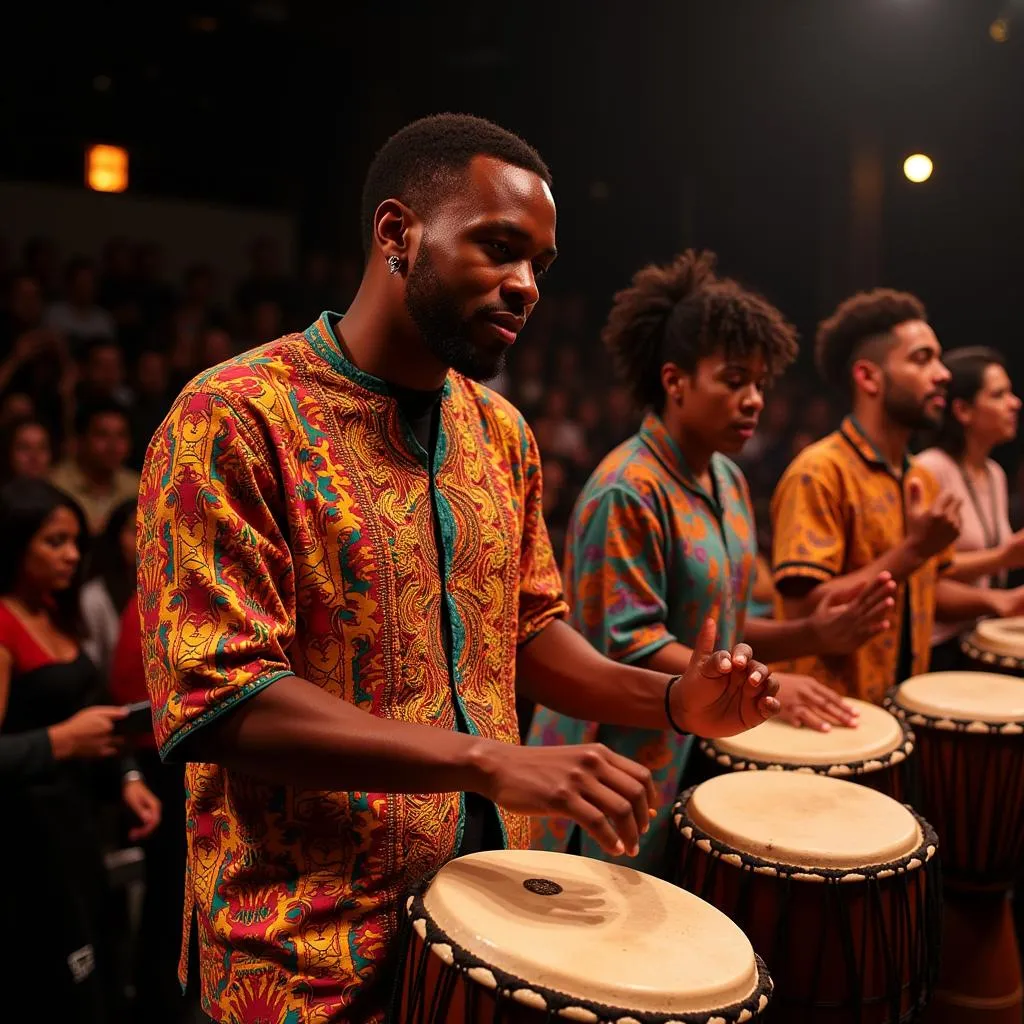African Artifacts in the Vatican: A Hidden History
African Artifacts In The Vatican represent a complex and often overlooked aspect of the relationship between the Catholic Church and the African continent. These objects, ranging from religious icons to everyday tools, tell a story of cultural exchange, missionary activities, and sometimes, colonial exploitation. This article will explore the history and significance of these artifacts, shedding light on their origins, their journey to the Vatican, and the ongoing debates surrounding their repatriation.
Exploring the Collection of African Artifacts in the Vatican
The Vatican Museums house a vast collection of artifacts from across the globe, including a significant, though less publicized, collection from Africa. These items represent a variety of cultures and time periods, offering a glimpse into the diverse artistic traditions and historical experiences of the African continent. From intricately carved masks and statues to ceremonial objects and textiles, the collection showcases the rich cultural heritage of African societies.
While the exact number of African artifacts in the Vatican is difficult to determine, the collection spans centuries and includes objects acquired through various means. Some were gifts from African rulers or missionaries, while others were brought to Rome during periods of colonization. This diverse provenance raises important questions about the ethical implications of collecting and displaying these artifacts.
The Stories Behind the Artifacts: Origins and Acquisition
The stories behind the acquisition of these African artifacts are as diverse as the objects themselves. Some pieces were presented as diplomatic gifts, signifying respect and fostering relationships between the Vatican and African kingdoms. Others were collected by missionaries who saw them as examples of “pagan” practices, intending to document and suppress local religions. Still others were acquired during the colonial era, a period marked by exploitation and the forced removal of cultural heritage from Africa.
Understanding the context in which these artifacts were acquired is crucial to interpreting their significance. Were they willingly given, traded, or taken by force? These questions are central to the ongoing debate about repatriation and the ethical responsibility of museums to address the complex histories of their collections.
Repatriation and the Future of African Artifacts in the Vatican
The question of repatriation, the return of cultural artifacts to their countries of origin, is a complex and highly debated issue. Many African nations have called for the return of their cultural heritage, arguing that these objects are essential to their national identity and historical narrative. The Vatican, like other major museums, faces increasing pressure to address these claims and engage in open dialogue about the future of these artifacts.
What are the arguments for repatriation?
Proponents of repatriation argue that returning these artifacts is a matter of justice, rectifying historical wrongs and acknowledging the cultural significance of these objects to their communities of origin. They also emphasize the importance of these artifacts for cultural preservation, education, and research within their original context.
What are the challenges of repatriation?
The process of repatriation faces numerous challenges, including logistical complexities, legal issues, and concerns about the preservation and security of artifacts upon their return. There are also debates about ownership and the criteria for determining which objects should be repatriated.
Dr. Kwame Asante, a renowned historian of African art, notes, “The repatriation debate is not simply about returning objects. It’s about acknowledging historical injustices and empowering African nations to control their own cultural narratives.” This sentiment reflects the broader context of the repatriation movement, which seeks to redress historical imbalances and promote cultural understanding.
Another expert, Dr. Amina Omar, an archaeologist specializing in East Africa, adds, “These artifacts hold invaluable information about African history and culture. Their return would be a significant step towards reclaiming our heritage and strengthening our cultural identity.”
Conclusion
The presence of African artifacts in the Vatican tells a multifaceted story of cultural exchange, missionary activity, and colonial legacies. Understanding the origins and acquisition of these objects is crucial to appreciating their significance and engaging in meaningful discussions about their future. The ongoing debate about repatriation highlights the complex ethical questions surrounding the ownership and display of cultural heritage. As the conversation continues, the Vatican’s response to repatriation requests will play a vital role in shaping the future relationship between the Church and the African continent.
FAQ
- How many African artifacts are in the Vatican? The exact number is unknown, but the collection is substantial.
- How were the artifacts acquired? Through gifts, missionary collections, and colonial acquisitions.
- What types of artifacts are included? Masks, statues, religious objects, textiles, and everyday tools.
- What is the debate about repatriation? The ethical and logistical complexities of returning artifacts to their countries of origin.
- What is the Vatican’s stance on repatriation? The Vatican is engaging in ongoing discussions and considering requests on a case-by-case basis.
- Why is repatriation important? It’s a matter of justice, cultural preservation, and reclaiming historical narratives.
- Where can I learn more about these artifacts? Further research can be conducted through scholarly articles, museum databases, and online resources.
Further reading suggestions: “The Vatican and Africa: A History of Engagement” and “Repatriation and Cultural Heritage: Ethical Considerations.”
For any assistance regarding African artifacts and related inquiries, please contact us at Phone: +255768904061, Email: [email protected] or visit our office at Mbarali DC Mawindi, Kangaga, Tanzania. Our customer support team is available 24/7.


